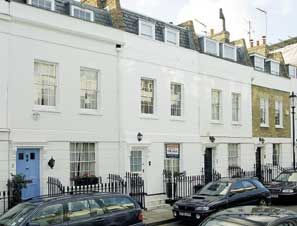London property investment - investing in property funds
Property funds can be a hassle-free way of investing in London property finds Arabella Youens


For those who want to put spare capital into bricks and mortar, the advantages of investing in property funds rather than becoming a buy-to-let landlord are particularly attractive in the current lending environment. Results from a poll of landlords published by LSL Property Services last week demonstrate this: 73% said that the lack of mortgage finance will prevent them from buying any more property in the next 12 months.
Better still, the investment level is lower, generally between £1,000 and £100,000. As the average price of a property in the UK stands at £169,042, and anyone wanting to invest in central London needs to spare about £500,000 to secure a good property in a prime position, this smaller outlay has its attractions. Plus, they can also be held in self-invested personal pensions (SIPPs), which bring their own tax advantages.
The funds differ in various ways: some are listed, others are close-ended. All aim to buy in the seemingly expandable zone that is ‘prime central London'. This is important. Naomi Heaton of London Central Portfolio (LCP) (www.londoncentralportfolio.com) is unfailingly optimistic about the future performance of prime London property.
‘Prices doubled in value between 2000 and 2008, and if prices follow long-term trends and double again by 2016, this would represent, on average, annual growth of 11.5%. But there's a catch,' she continues. ‘London may be made up of 32 boroughs [plus the City], but in our mind, there are only two that form central London: Westminster and the Royal Borough of Kensington and Chelsea.'
LCP launched its second, Recovery, fund at the end of last year, targeting a micro market of one- and two-bedroom flats in the ‘platinum postcodes' around Hyde Park. The fund size is £23 million, and it aims to buy between 20 and 30 properties, with a second and final closing due around the end of March. ‘All will need renovating and that will add value immediately,' adds Miss Heaton.
‘We target the professional rental sector: the majority of our tenants are from overseas (LCP's other arm is a buying and managing agency) and want to live in the centre of town. We've achieved an occupancy rate of 96% for the past 20 years-smaller properties have the advantage that they take less of a hit than top-end houses in the event of a crisis such as 9/11.' The fund is targeting a return equivalent to 15% a year over a five- to eight-year lifetime and no money will be returned to investors before it's wound up and acquisitions sold.
Taking a wider scope of prime London is the CR Property Fund (020-7930 7076), which launched in January. With the support of British Land and King Sturge, it expects to invest the majority of the equity in London flats priced between £300,000 and £800,000, and, to a lesser extent, central London properties with values around £5 million.
Sign up for the Country Life Newsletter
Exquisite houses, the beauty of Nature, and how to get the most from your life, straight to your inbox.
‘Despite better-than-expected performance in the second half of 2009, London Prime and Prime Central remain highly attractive in the long term due to a combination of global demand and long-term supply constraints,' explains Richard Crosthwaite at CR Property Advisers.
The D&G Prime London Capital Fund (www.dngim.com), set up two years ago, is a property unit trust ‘acquiring and improving' flats in central London and areas such as Clapham, Putney and Battersea. It plans to add value through refurbishments and lease extensions and incurs an annual management charge of 1.75%.
* For more property stories like this every week, subscribe and save
-
 A well-connected rural playground with 23 acres on the edge of the South Downs National Park
A well-connected rural playground with 23 acres on the edge of the South Downs National ParkOld House Farm is an impressive family home with a wealth of amenities that would inspire any rural passion.
By Arabella Youens Published
-
 The UK gets its first ‘European stork village’ — and it's in West Sussex
The UK gets its first ‘European stork village’ — and it's in West SussexAlthough the mortality rate among white storks can be up to 90%, the future looks rosy for breeding pairs in southern England.
By Rosie Paterson Published

